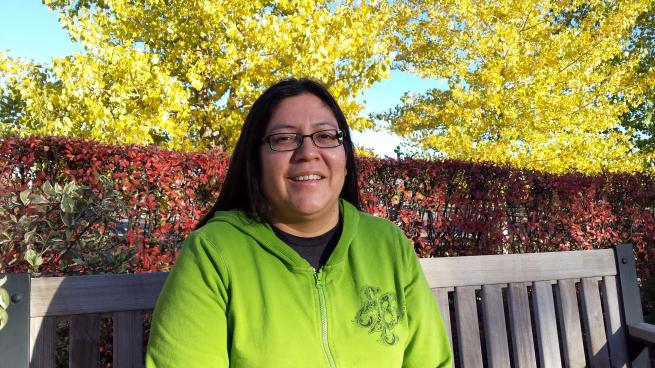The growing resource industry in northeast British Columbia is putting indigenous women and girls at increased risk of violence, according to a new report from Amnesty International.

The report criticizes federal and provincial government authorities for failing to take action on decades-old concerns linking infrastructure projects to undesirable social and economic consequences.
Alcohol and drug abuse on the part of the largely male temporary workforce, coupled with an understaffed regional RCMP force, has left already-marginalized indigenous women exposed to violence, the study says.
READ MORE: Canada’s missing, murdered women inquiry to be monitored by global rights group
Furthermore, the workers’ high wages has led to an unbridled rise in the cost of living, leaving those who don’t get to reap the benefits of resource development — disproportionately aboriginal women — in the lurch.
“High-wage jobs benefit some people but they also drive up local prices, so we have high prices for basic necessities like housing,” Craig Benjamin, indigenous rights campaigner for Amnesty International Canada, told Global News. “What this means for people who don’t have access to those jobs is high economic insecurity and a high degree of dependence on people who do have jobs.”
This makes it difficult for women to claw their way out of abusive relationships because they run the risk of slipping into abject poverty, the report also says.
READ MORE: Solutions sought to end violence against aboriginal women
- Joffre Lakes to close for 3 periods this year under agreement with First Nations
- ‘Why aren’t we doing more?’ White Rock on edge with killer on the loose
- B.C. carjacking victim says she doesn’t trust the ‘catch-and-release’ system
- Inquest into fatal Surrey hostage-taking recommends cameras for ERT teams
Furthermore, the constant turnover of temporary workers means abuse often goes unaccounted for.
Connie Greyeyes, a Fort St. John, BC activist credited by Amnesty International with encouraging them to undertake their research, says the easy anonymity enjoyed by transient workers makes it difficult for them to be punished for abusing women.
“We regularly see cases of women assaulted by an oil field worker or other temporary worker that they might have met in a bar, and the assaults go unreported because lots of times they don’t know who the men are,” Greyeyes told Global News. “They generally fly workers in in two-week shifts. You can come to this community as a worker and be anonymous.”
READ MORE: Amnesty International says human rights improving under Trudeau government, but many concerns remain
The influx of transient workers also results in a severe strain on infrastructure, with the report stating that BC lags behind Alberta when it comes to adequately assessing the impact of so-called ‘shadow workers’.
The municipality of Wood Buffalo, Alta., which uses a census model specifically designed to account for transient workers, found that the actual population of their area was 50 per cent higher than what would have been identified by a regular census like the one conducted in BC.
In addition to better tracking temporary workers, the report recommends the suspension of the Site C dam project on Peace River, which “threatens to destroy some of the few remaining, relatively intact ecosystems that are readily accessible to First Nations.”
WATCH: First Nations communities protest Site C dam

Greyeyes adds that even those indigenous women who are qualified and willing to work on the dam don’t get the opportunities that their experience warrants. She cites the case of a couple who went to Site C seeking employment — the woman had seven years’ experience operating industrial trucks, and her boyfriend only one year.
“They both got jobs at the dam. He got a job as a truck operator, and she got a job as a housekeeper.”
On Thursday, New Democrat MP Sheila Malcolmson laid into the Trudeau administration for giving the project the green light before considering its impact on indigenous women and girls.
“This report is consistent with what I heard from indigenous leaders directly when I travelled to the Peace River Valley this summer,” Malcolmson said in the House of Commons.
Benjamin adds that while Canada goes to great lengths to pay attention to the gender-specific impacts of development projects that it supports abroad, it doesn’t do the same in its own backyard.
READ MORE: The Great Divide between resources and environment will dominate B.C. election: Baldrey
“It’s astonishing to me that we don’t apply the same rigour and precautionary principles in decisions here in Canada,” he said.
He adds that the federal government already has an official policy calling for gender-based analysis to be carried out prior to starting new resource development projects, but it isn’t put in practice.
“The impacts are out of sight, out of mind.”




Comments